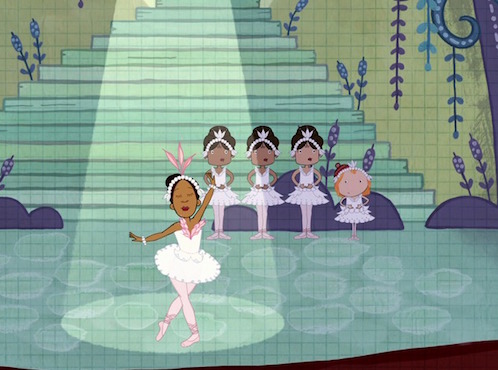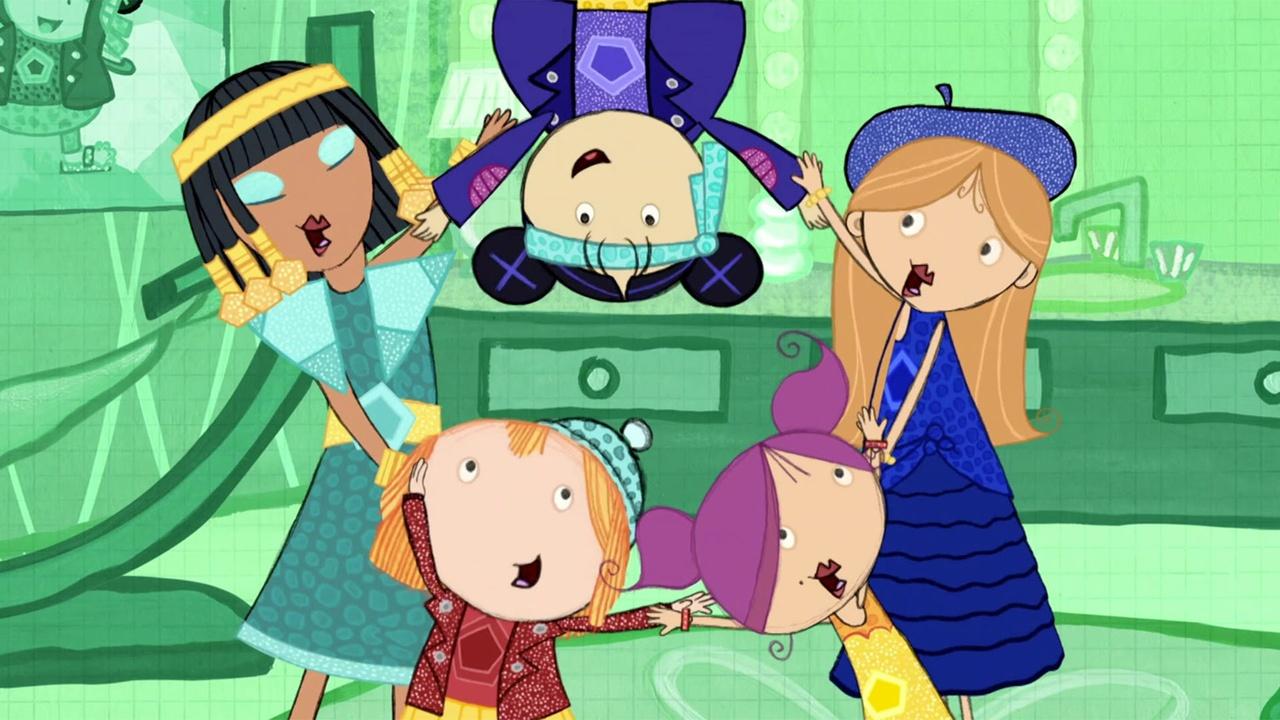Remember that adorable, yellow cat with a knack for getting into sticky situations? Peg + Cat, the beloved PBS Kids show, isn’t just about catchy tunes and heartwarming friendship. It’s also a clever and fun way to introduce preschoolers to foundational math concepts, and the “Dance Problem” episode is a prime example. In this episode, Peg and Cat find themselves entangled in a hilarious dance-off with a robot named “R.O.B.O.T.” – but their dancing dilemma becomes a delightful mathematical problem, filled with counting, patterns, and even a little bit of logic!

Image: www.familychoiceawards.com
Why is this episode so important? Because it shows kids that math isn’t just about boring numbers on a page. It’s about understanding the world around us and using our brains to solve problems. The Dance Problem, with its silly scenarios and catchy music, makes learning math exciting, and that’s something every young learner needs.
The Problem: A Dance-Off Gone Wrong
So, what’s the problem, exactly? It all starts with Peg and Cat’s love of dancing. They’re having a blast, moving to the beat, until R.O.B.O.T. shows up with a challenge.
R.O.B.O.T. explains that to win a dance-off, Peg and Cat need to perform seven special “robot dance moves” – think of it as a sequence of steps. But there’s a twist! Each move needs to be a specific number of steps. The problem is, the numbers of steps for each move form a pattern, and R.O.B.O.T. has forgotten half of it!
To win the dance-off, Peg and Cat need to figure out the missing numbers in the pattern. Can they do it? Can they crack the code of the robot dance moves?
The Solution: Deconstructing the Dance
The episode cleverly dives into the problem-solving process. Peg and Cat, guided by their trusty “Think Tank,” begin to analyze the dance moves.
They start by looking at the moves they already know. R.O.B.O.T. tells them the first move is **two** steps, the second move is **four** steps, and the third move is **six** steps. Immediately, Peg notices a pattern: “Two, Four, Six…those numbers are even!”
With their knowledge of even numbers, Peg and Cat can start to predict the missing parts of the pattern. Each move seems to increase by two steps. Now, they need to find the missing moves to complete the sequence of seven.
The Power of Visual Aid: Learning Through Actions
Peg + Cat doesn’t rely on just numbers and equations. The episode teaches through actions. Peg and Cat physically demonstrate each dance move, making the math visually engaging.
By counting the steps with Peg and Cat, kids get a hands-on experience, seeing how the pattern plays out. R.O.B.O.T. also helps with this process by demonstrating his own version of each dance move.
This visual and interactive approach is key to making math less abstract and more relatable to young learners. It brings the abstract concepts to life, helping them understand the importance of pattern recognition.

Image: aptv.org
The Solution: Completing the Pattern
Using their visual aid and their understanding of even numbers, Peg and Cat confidently predict the missing moves.
The fourth move is **eight** steps, the fifth is **ten** steps, and the sixth move is **twelve** steps. The sequence becomes: **Two**, **Four**, **Six**, **Eight**, **Ten**, **Twelve**. Finally, they add the number of steps for the last move to complete the seven-move dance. The answer? The seventh move is **fourteen** steps.
Beyond the Dance Problem: The Importance of Pattern Recognition
The Dance Problem isn’t just about adding numbers. It’s about teaching essential math skills like pattern recognition, which lays the foundation for more complex concepts.
Pattern recognition is a fundamental skill that helps kids understand the world around them. It’s not just about dancing; it’s about recognizing sequences in music, language, and even nature. It’s about identifying trends, making predictions, and solving problems.
Peg + Cat’s Dance Problem expertly demonstrates how pattern recognition can be fun and accessible to young learners. It shows them that math isn’t just about memorizing facts; it’s about using logic and reasoning to solve problems.
Peg + Cat The Dance Problem
The Takeaway: Making Learning Fun
The Dance Problem is a fantastic example of how Peg + Cat effectively blends learning and entertainment. It challenges viewers to engage with math concepts in a playful and rewarding way. By solving the Dance Problem, Peg and Cat show kids that they can be successful with math, even if it seems tricky at first!
So, next time you’re watching Peg + Cat, pay attention to the math behind the fun! You’ll be surprised at how much learning is packed into each episode. It’s a reminder that learning can be an adventure, and even the most challenging problems can be solved with a little bit of curiosity and a lot of teamwork. Maybe you’ll even get inspired to start a dance-off of your own!






